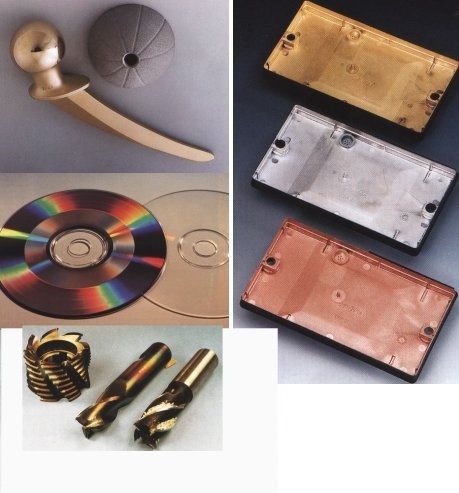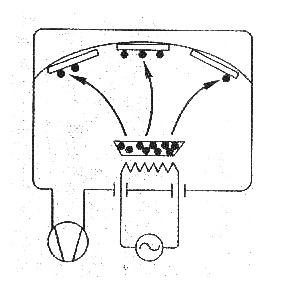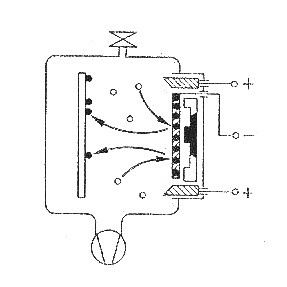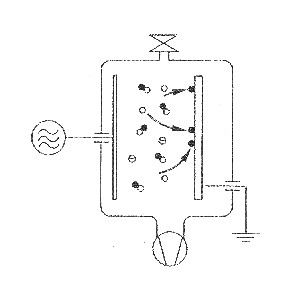|
Thin Film Deposition
author: Dr. Ralf Reuschling What are "thin films"? Thin films are typically layers of 10...100 nanometers thickness. Very often such a small number of atomic layers shows properties very different from the bulk state. E.g. optical reflexion or absorption can be tuned to exact value, same for electric conductivity. Surface hardness may be increased by factors, compared with the bulk material underneath. Or friction may be decreased drastically. Or the part will simply become nicer to look at. Finally, multi-layers may combine complex mechanical structures with electronic functionality, like with micro electronics and nano technology. 
Bild: medical prostheses (DOT GmbH Rostock), audio CDs, drills (Fraunhofer IWS Dresden Info 20), EMC coatings (MAT Dresden) Vacuum thin film deposition Vacuum thin film deposition today is a key technology for various industrial applications. While for many years its industrial use was mainly for window glass, precision optics, opthtalmics, decorative coatings, tools, and semiconductors, nowadays it also covers mass production of cellular phones, compact discs, as well as all kinds of flat displays. In this way, vacuum thin film deposition has also become of interest for mid-size companies. Along with this, R & D of deposition processes is an ongoing challenge. Thin film coatings must usually be applied under vacuum conditions, in order to prevent oxidation or contamination of the layer. resistive evaporation 
The oldest technology is resistive evaporation. A refractory metal wire, basket, or "boat" is driven by a high current, the generated heat evaporating pieces or wire of other material, which then goes up and covers a work piece attaced in the upper part of the vacuum chamber. In order to evaporate materia with higher melting point, an electron beam is generated and focussed on a small piece of that meterial, giving the same effect as above. Both variants require high vacuum conditions. sputtering 
So-called Sputtering is a different process in which Argon gas is ionized and electrically attracted to a solid sheet of metal. Metal atoms are bounced out and ballistically fly to the workpiece. Working with a pulsed DC supply or even an Rf supply, this technique may also be used with insulating source material. Sputtering only requires fine vacuum conditions. Plasma-CVD 
Modern technologies often include plasma processes, where the ionised gas directly provides the coating material or where the ions are used to etch wafers or other workpieces. |
Vacuum Coating - FAQ's
coating equipment - all manufacturers vacuum coating - services DIY: Sputtering Machine for Thin-Film Deposition  Dünnschicht Beschichtung
Dünnschicht Beschichtung Couches minces
Couches minces |